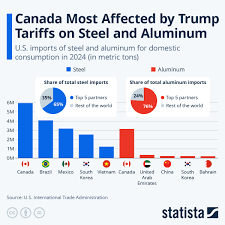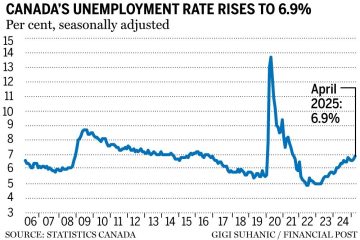Understanding the Impact of Trump Tariffs on Canada

Introduction
The tariffs imposed by the Trump administration during his presidency have been a significant aspect of Canadian-American trade relations. As the two countries are closely linked economically, these tariffs have affected various sectors in Canada, reshaping trade dynamics and prompting discussions on future relations. Understanding the implications of these tariffs is crucial for both businesses and consumers in Canada.
The Background of Trump Tariffs
In early 2018, President Donald Trump announced a series of tariffs on steel and aluminum imports, citing national security concerns. The tariffs were set at 25% for steel and 10% for aluminum, directly impacting Canadian exports, as Canada is one of the largest suppliers of these metals to the U.S. The Canadian government swiftly responded by introducing counter-tariffs on a range of U.S. goods, including whiskey, ketchup, and various food products.
Impacts on Canada’s Economy
The tariffs resulted in a considerable impact on various Canadian industries. The steel and aluminum sectors faced increased costs due to the tariffs, leading to concerns about job losses and reduced competitiveness. Many Canadian manufacturers who relied on imported steel for production were also affected, facing increased prices and potential supply chain disruptions.
Further, the Canadian government estimated that retaliatory measures could result in a loss of about CAD $3 billion in exports, affecting not only manufacturers but also the agricultural sector, which faced barriers to entry in the U.S. market.
Political Reactions and Negotiations
The imposition of tariffs sparked significant political reactions in Canada, with leaders from various parties urging the government to protect Canadian interests. Negotiations between Canada and the U.S. culminated in the new United States-Mexico-Canada Agreement (USMCA), which replaced the North American Free Trade Agreement (NAFTA). This agreement included provisions aimed at reducing trade barriers but did not eliminate the tariffs immediately.
Conclusion
As of 2023, while the Biden administration has taken steps to address some of the trade issues, tariffs on steel and aluminum remain a contentious topic in U.S.-Canada relations. The long-term impact of these tariffs will likely influence trade negotiations and policies for years to come. For Canadian businesses and consumers, understanding the implications of these tariffs is crucial as they navigate this complex landscape, with many advocating for a balanced approach to trade that fosters cooperation rather than conflict.








